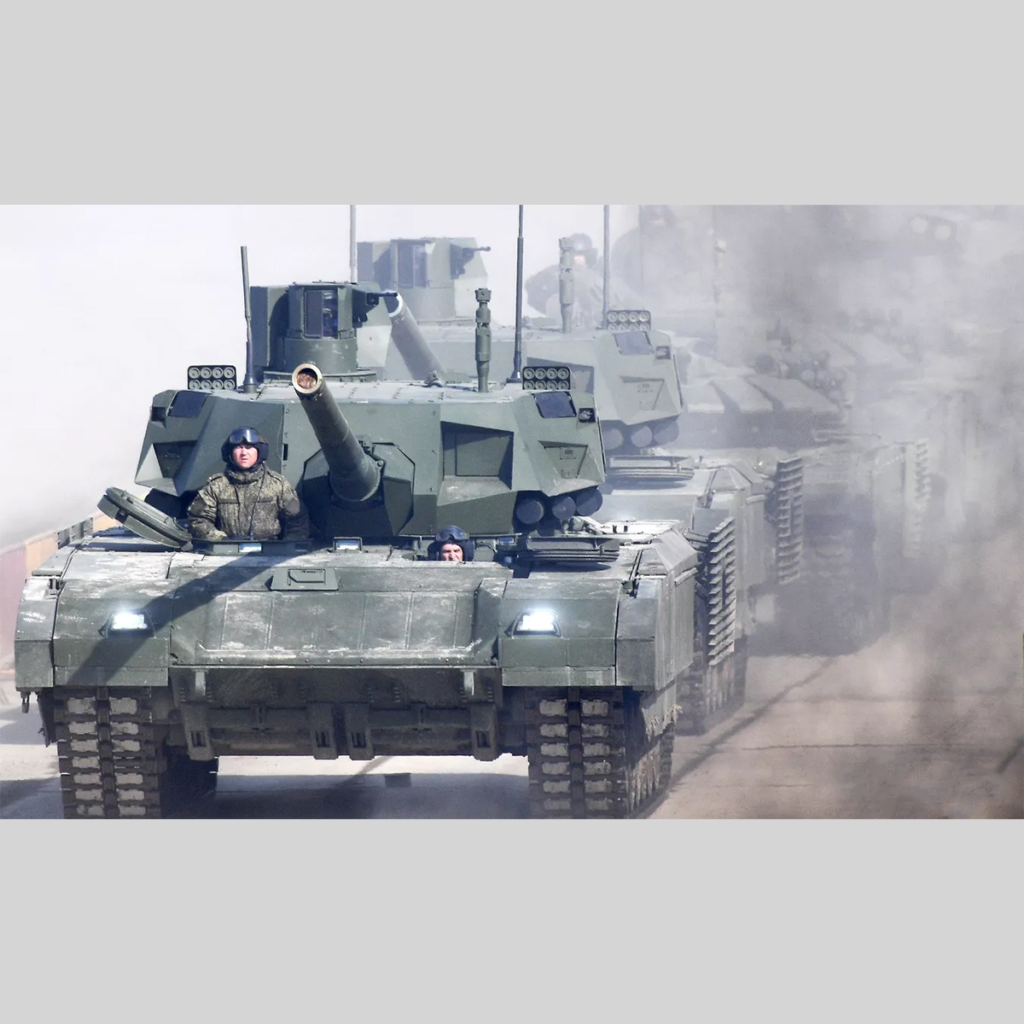
Media reports circulated last March that the Russian Army’s best tank formation, the 1st Guards Tank Army, would be equipped with a number of T-62 medium tanks that were recently taken from storage and updated with modern armor. Though the T-62 was not a bad tank when it was introduced in the early 1960s, it likely wasn’t what most Western observers would have expected one of Russia’s most prestigious tank units to receive — especially as the 1st Guards Tank Army was scheduled to be supplied with something considerably more modern.
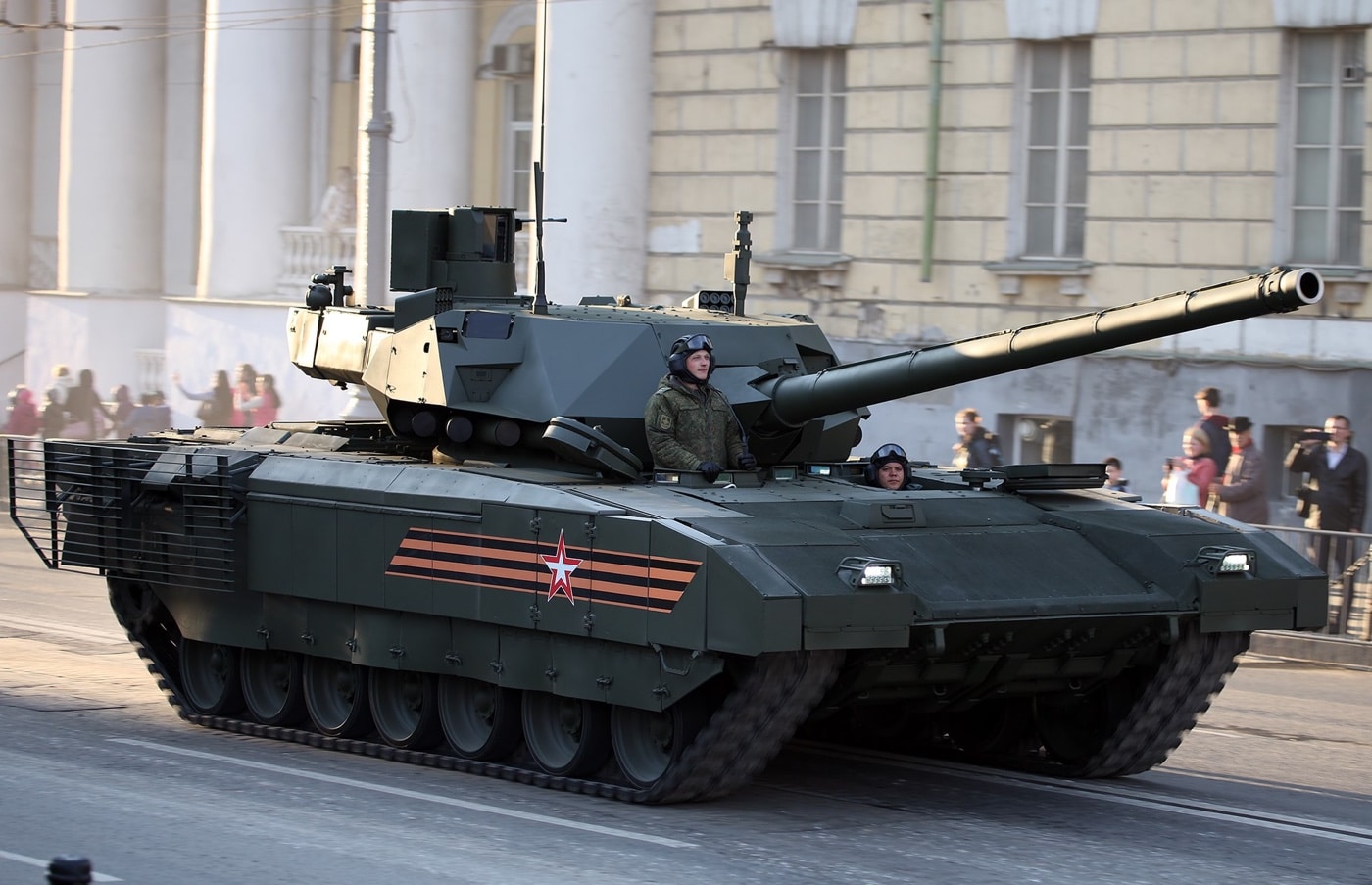
The unit had been tagged to receive the T-14 Armata, the Kremlin’s next-generation main battle tank (MBT).
The first new Russian tank to be designed in decades, it was meant to be a notable departure from Soviet-era tank design. In addition, it had been touted to be the most advanced armored vehicle in the world, even though its development was long and protracted.
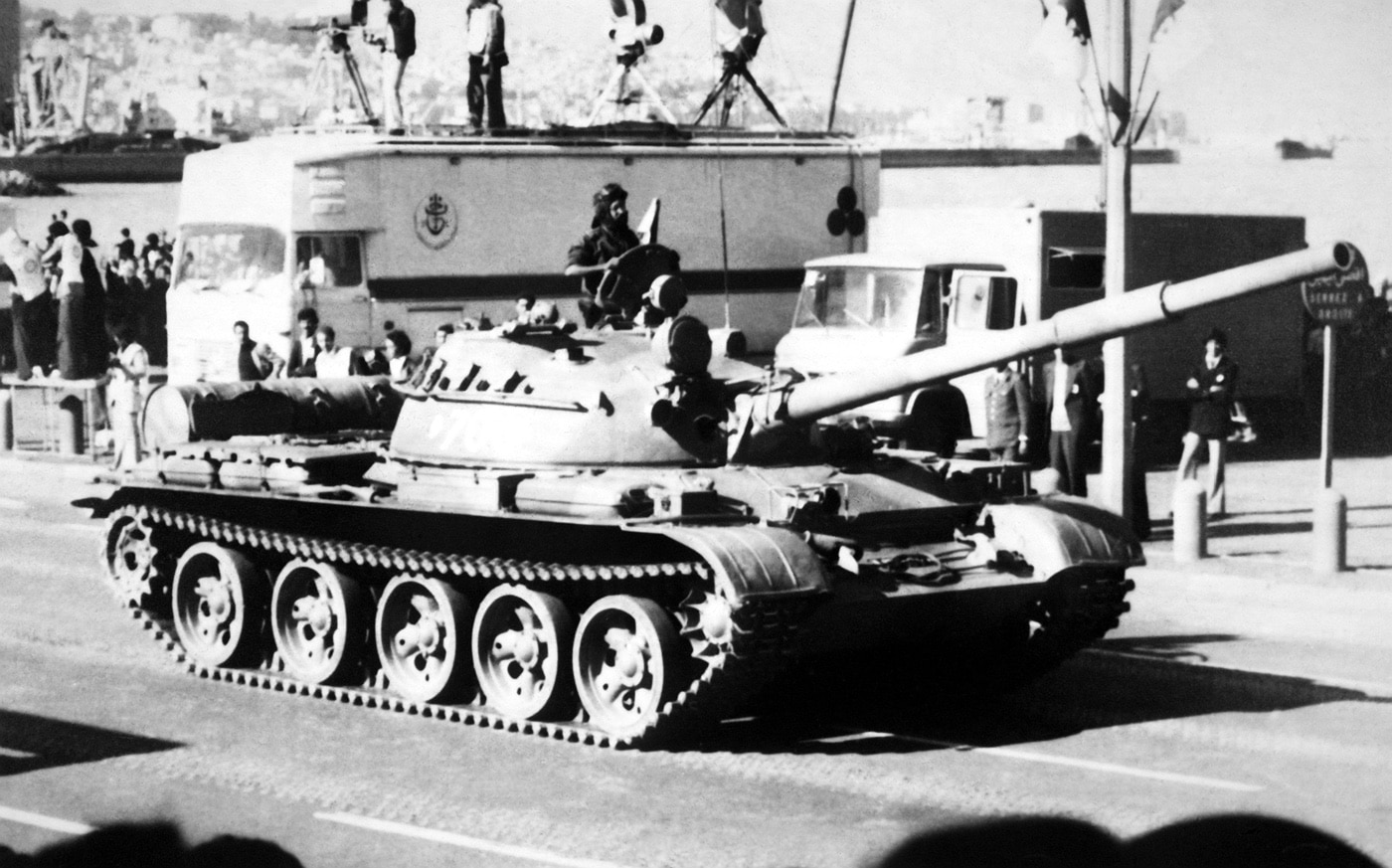
Moscow initially had plans to acquire 2,300 T-14s between 2015 and 2020 with the 1st GTA to be among the initial operators of the new platform.
Yet, as with many of Russia’s bold plans and ambitions, reality had a way of interfering.
Only a handful of T-14s had actually been produced by 2020, and even before then, the Kremlin had announced production would be scaled back considerably. In 2021, it was announced a test block of 100 tanks would be produced for the 2nd Guards Tamanskaya Motor Rifle Division — with delivery to begin in the fall of 2022.
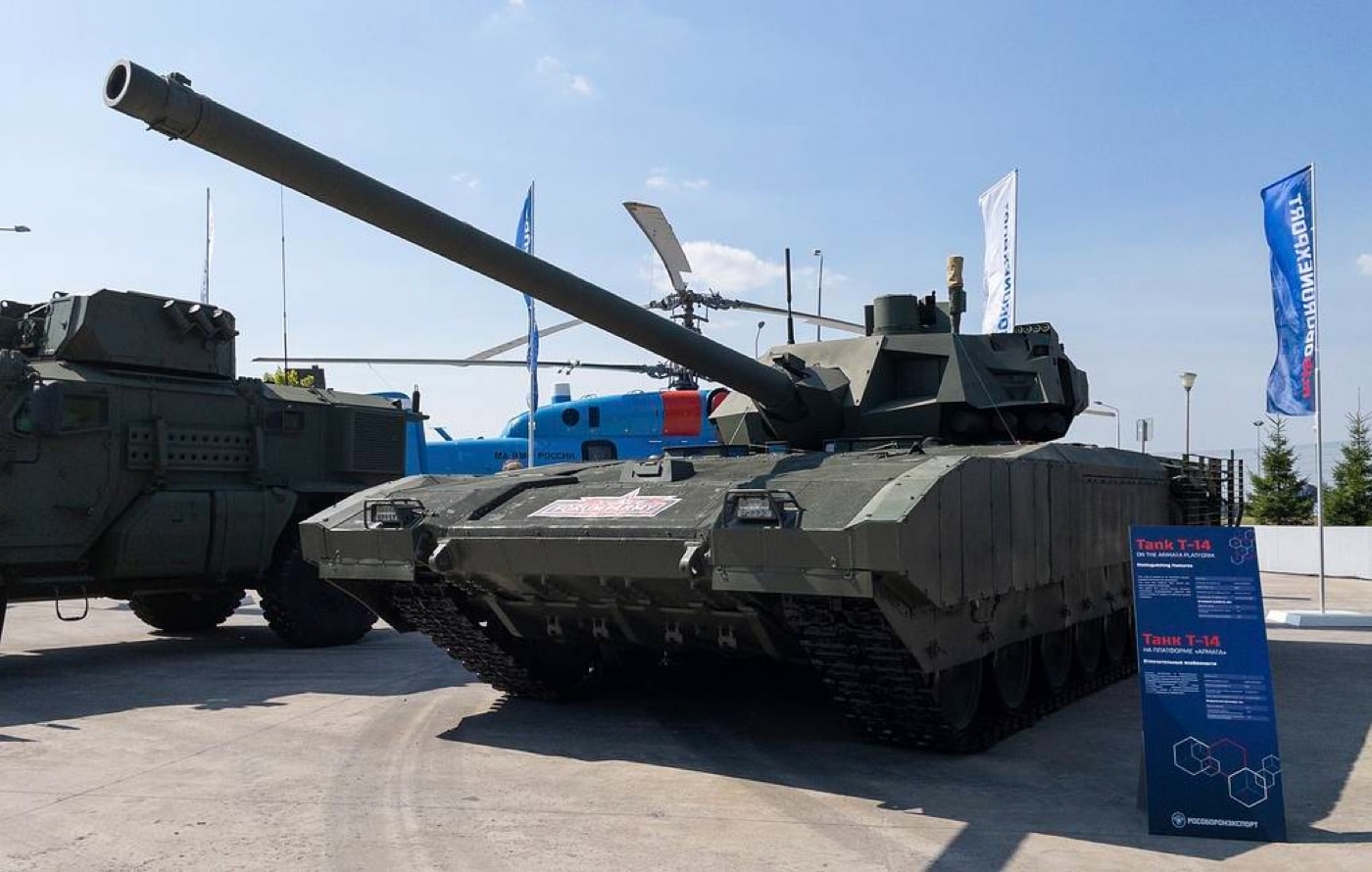
Russia’s invasion of Ukraine apparently derailed those efforts. The Russian military likely expected a quick victory rather than a prolonged war. Instead of focusing on the production of a new and largely untested MBT, the Kremlin has been working overtime to refurbish older tanks, including those T-62s, for deployment to Ukraine.
Though 40 T-14s were supposed to be delivered to Russian forces by the end of 2023, current speculation suggests that fewer than two dozen may have been produced. Just eight were reportedly spotted at the 2022 Victory Day Parade in Moscow. That’s the same number of T-14 tanks that were present in 2015 when the MBT made its “grand” public debut.
Even before February 2022, the Kremlin almost certainly would have struggled to meet the production quotas of the T-14 Armata. Though an advanced tank, it is an ambitious war machine for a country that has been a bit cash-strapped in the best of times.
Each tank had an official cost that was just shy of $4 million in 2015, and the costs have only gone up.
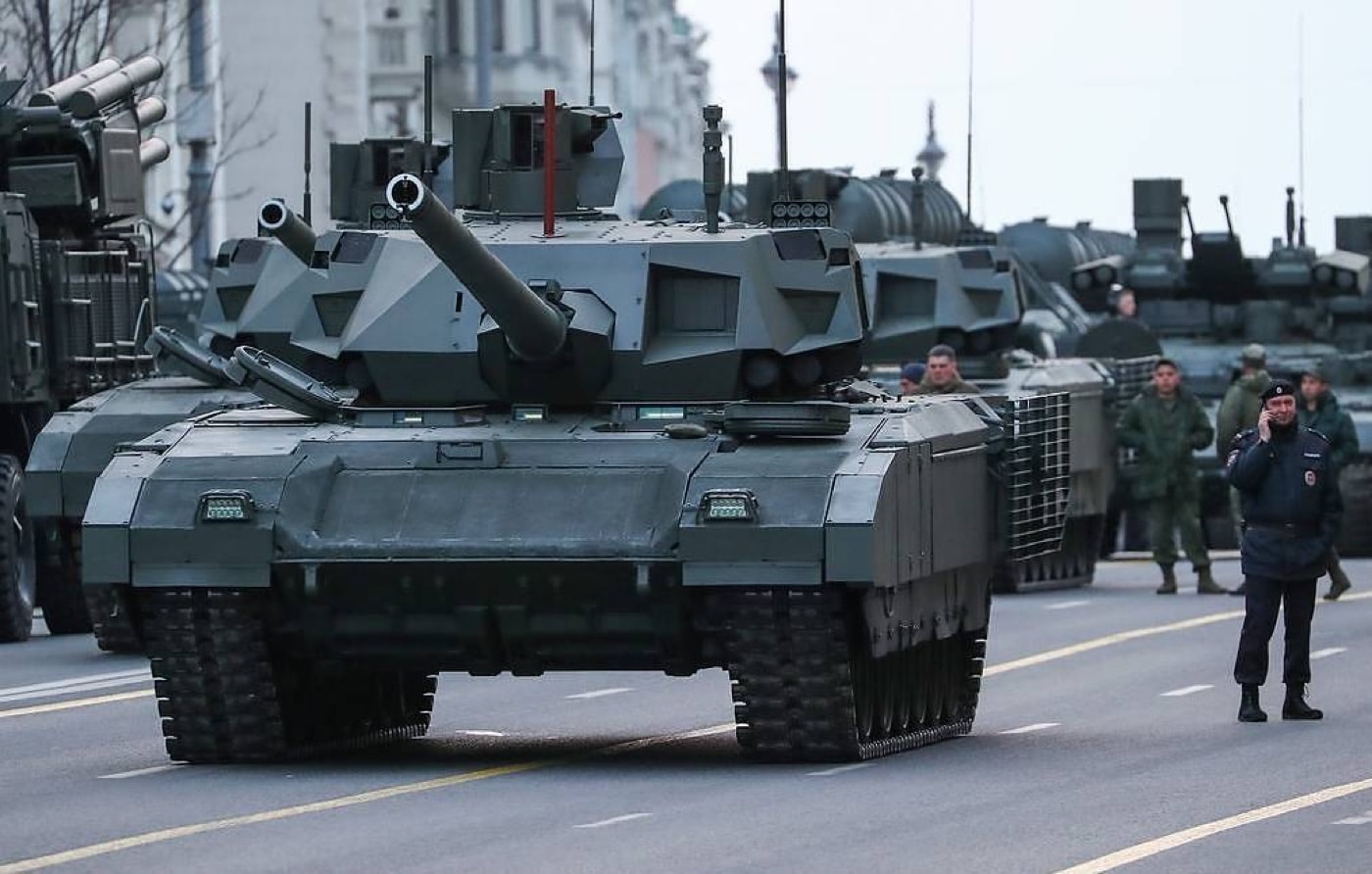
Though $400 million isn’t an astronomical sum for a nation the size of Russia, the fact that it was still for just 100 tanks helps put this in perspective. Producing the full run of 2,300 tanks, factoring in cost overruns that always occur in a land filled with so much corruption, the Kremlin could have been looking at $10 billion.
In addition, it should be made clear that Russia may have vastly underestimated the costs to build the T-14. According to open-source intelligence, the Armata likely has a price tag that is somewhere between $5.1 million to $7 million each.
The other problem is that Moscow could struggle to produce even one T-14 given the current sanctions imposed after its invasion of Ukraine.
Today, Russia is struggling to source many of the Western-made components, including microprocessors, needed in this advanced MBT. Perhaps Russia could have squeezed out the 100 tanks before the invasion went sideways, but it would likely be difficult to do so now.
Another factor is the shortage of facilities to produce such an ambitious platform.
Currently, the Russian Federation maintains just two tank factories: Uralvagonzavod and Omsktransmash in Omsk Oblast. Those facilities are struggling just with the production of a couple dozen T-72B3 and T-90M tanks a month, while as David Axe of Forbes.com reported last year, those plants are also restoring old stored T-72s, T-80s and even older T-62s.
[For additional reading, check out Peter Suciu’s article on the T-80 tank.]
The two factories are running at near capacity.
The Kremlin is now more focused on refurbishing its older tanks. It can churn out about 50 a month, which it needs badly as reports suggest the Russian Army may have lost upwards of 2,000 MBTs in Ukraine to date.
Simply put, there is neither the manpower nor the money to produce T-14s. And as noted, there are no parts available either. That explains why the 1st Guard Tank Army — the “cream of the crop” of Russian tankers — will likely roll into action in Ukraine with tanks that could have been crewed by their fathers or grandfathers.
Of course, that could be just part of the story.
The Kremlin doesn’t like to advertise the fact, but the 1st GTA suffered devastating equipment losses on the battlefield in back-to-back defeats in Ukraine. The first was in the advance on the Ukrainian capital of Kyiv last spring. No doubt one issue was that the tank crews — who reportedly arrived with dress uniforms instead of winter equipment — expected to be greeted as liberators with young women and girls handing them flowers.
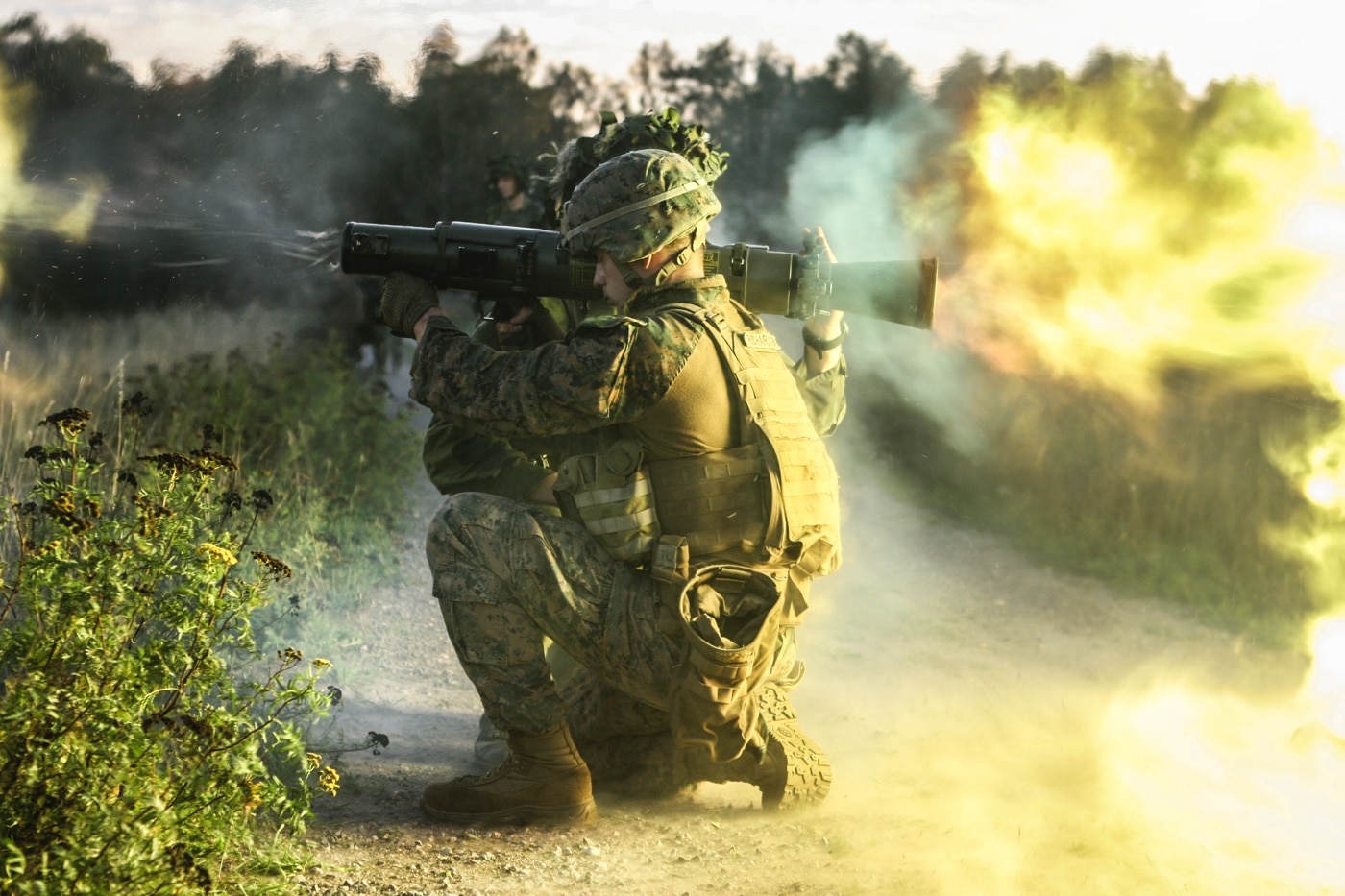
Instead, they were met with Western-made man-portable anti-tank missiles. The 1st GTA took heavy losses and was forced to pull back.
It then suffered a similar fate in Kharkiv six months later. Thus, the unit that went from likely having the most modern T-90 tanks could soon be left with T-62s to bolster its ranks. Even if it wasn’t meant as a punishment, it may feel like it to those Russian tankers who lost (or even abandoned) their MBTs in past battles.
Throughout its history, Russia has been a nation that has often had military ambitions beyond its reach. Though it is a massive nation in size, it has long been dwarfed by Western industry. Such was the case in Imperial Russia, and though the Soviet Union sought to rapidly modernize the nation, the fact it was done under the highly imperfect communist system only took it so far.
Corruption has also appeared to only increase in the past few decades.
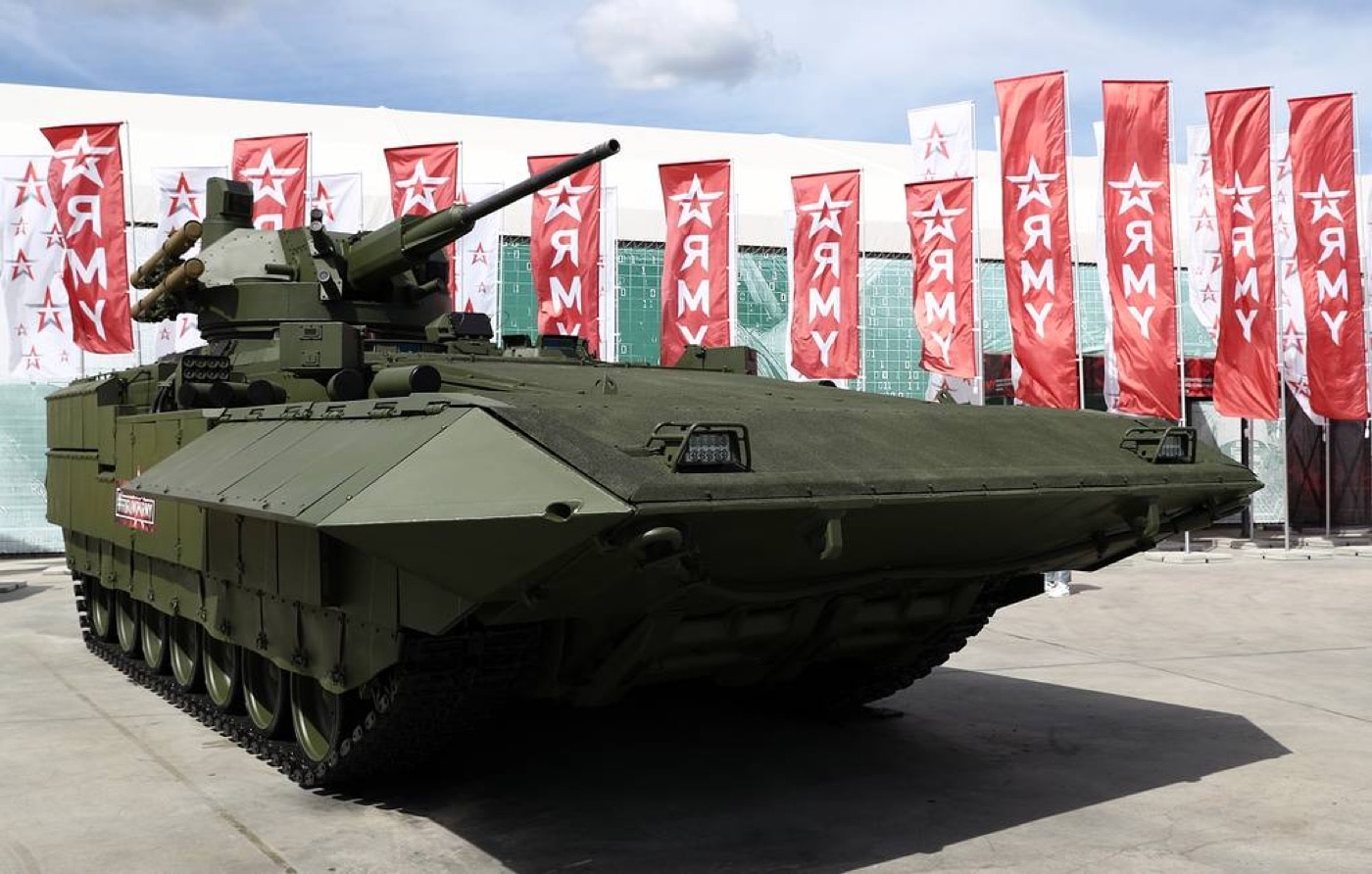
Following the dissolution of the Soviet Union, Russia had actually lost its primary tank production facility, which was located in the then-newly independent Ukraine.
Throughout the 1990s, cash-strapped Russia had a number of starts and stops to develop a new tank. The T-95 MBT was canceled and, instead, work was then redirected towards the “Armata” Universal Combat Platform, which called for not only the creation of the T-14 MBT, but also a T-15 heavy infantry fighting vehicle (HIFV), a combat engineering vehicle, and heavily armored personnel carry (HAPCs), an armored recovery vehicle, and even multiple types of self-propelled artillery (SPA) systems.
Ambitious doesn’t begin to describe the family of vehicles that the Kremlin hoped to see developed.
As has been stated, the T-14 was a completely new design that had little in common with Soviet-era designs. Though no tank can truly be described today as starting with an entirely clean slate, this was truly as close as Moscow would like to get to a fresh start in MBT design.
It was also seriously envisioned that the Armata family could replace not only the older Russian MBTs in service but nearly all of the APCs, IFVs, and other vehicles with a single platform. In theory, it would be a solid idea. It would solve the old Soviet-era tank system of having barely compatible equipment that often lacked common parts with one that was truly universal, and all based on the same chassis.
In fact, a nation with a lot more money and a lot less corruption would be hard-pressed to pull this off. For Russia, it was a Sisyphean task. As a result, only a handful of prototypes have been produced — and even as the Kremlin has put the emphasis on the T-14 MBT, as noted, fewer than two dozen appear to have been manufactured.
Perhaps another reason too that the T-14 hasn’t been pushed into production is that it didn’t exactly overwhelm the world when it made its very public unveiling in May 2015. As “The Diplomat” reported at the time, “The first major tank to be developed in Russia since the collapse of the Soviet Union abruptly grounded to a halt during a rehearsal for Moscow’s big May 9 Victory Day parade.”
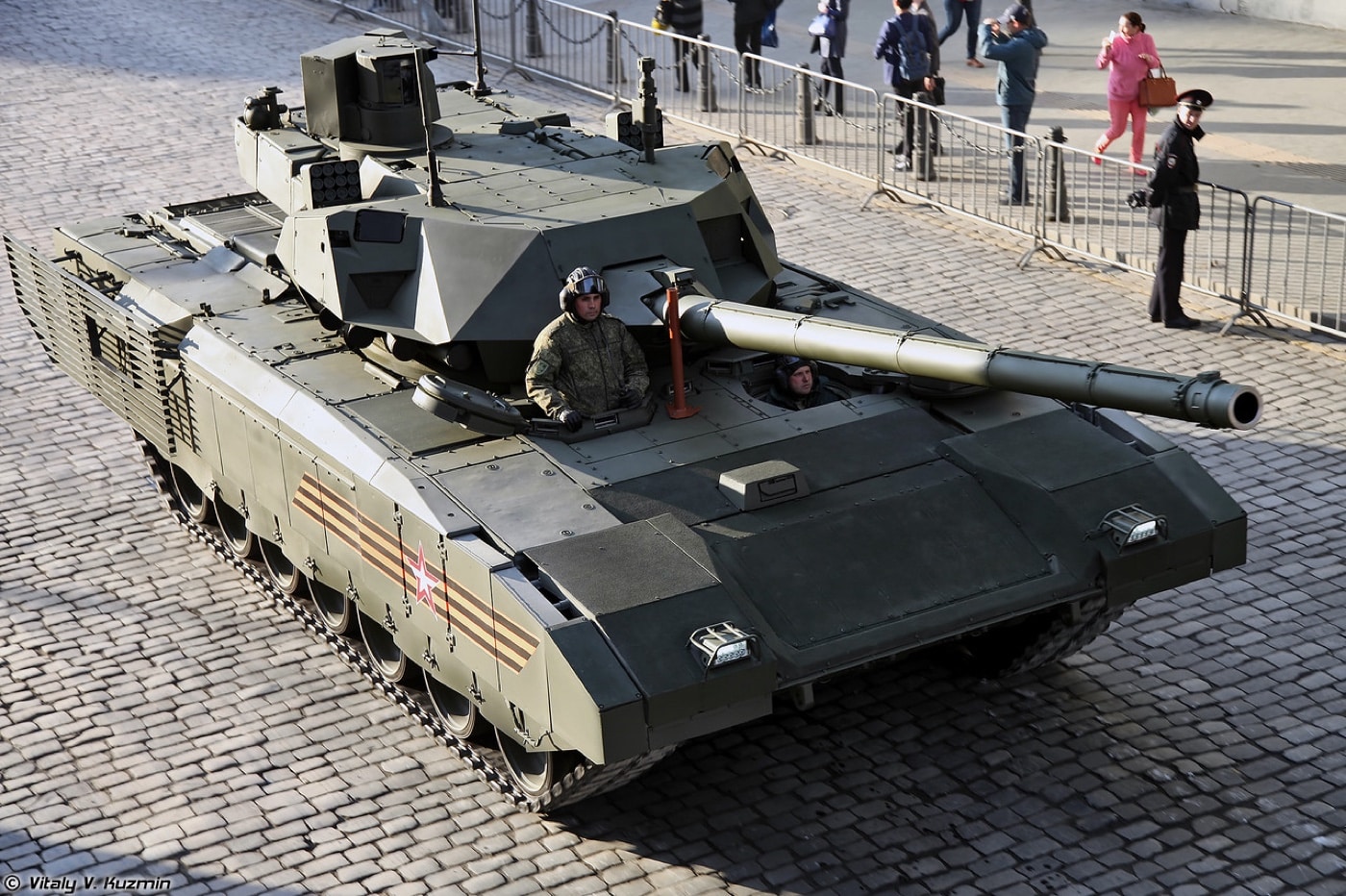
For some 15 minutes, the tank was unable to move on its own power after it broke down in Red Square. When it finally was able to start rolling again, loudspeakers announced that the stop was planned.
“We have demonstrated how the evacuation of military hardware [during battle] will be conducted. The tank’s stop was planned,” the parade’s announcer told curious spectators.
It may sound like a joke now, but certainly, no one at the Kremlin was laughing.
Fortunately for the Kremlin, the kinks were worked out and its eight T-14 prototypes did take part in the annual celebrations that mark the Soviet Red Army’s victory in the Second World War.
Russian state media, which has continued to tout the capabilities of the T-14, was quick to report in 2016 that British military intelligence described the Armata as “the most revolutionary step change in tank design in the last half-century.”
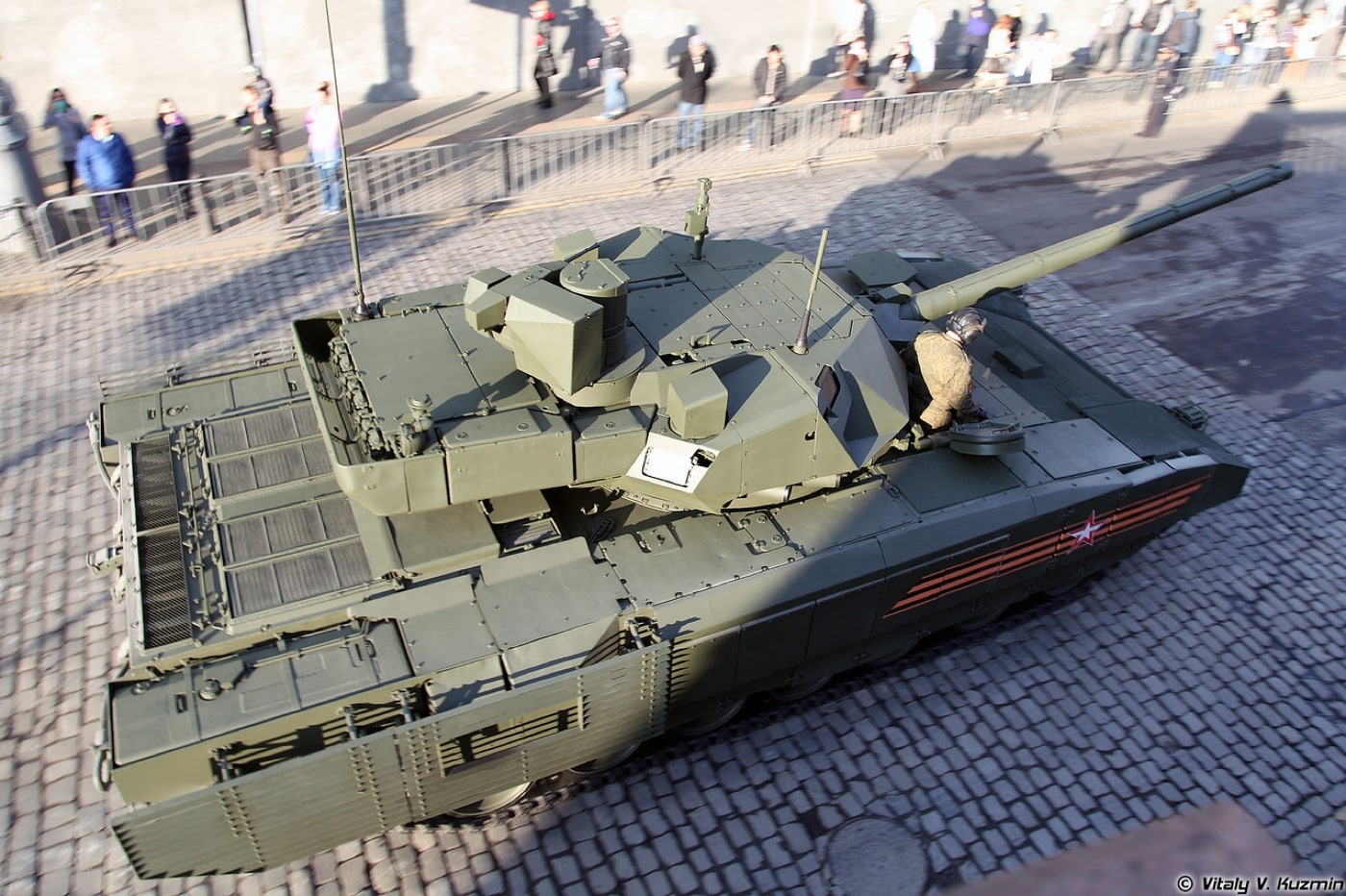
The British briefing, which was published by “The Sunday Telegraph” newspaper, was quick to note that the T-14 features a revolutionary unmanned turret, which could make the crew less vulnerable to enemy fire, and that it had a higher muzzle velocity than the closest Western analogs
“As a complete package, Armata certainly deserves its billing as the most revolutionary tank in a generation,” the report also stated.
Clearly, the hyperbole from the Russian media failed to also understand that a revolutionary design doesn’t always mean it is the right step forward. Though it does feature a remotely controlled 125mm 2A82-1M smoothbore main gun with fully automated loading, its magazine is still stored in the turret — something that hasn’t worked out so well for the T-72 MBTs in Ukraine. Perhaps it wasn’t such a clean slate after all!
Likewise, the roof of the turret may house a meteorological mast, satellite communications, global navigation satellite system (GLONASS), data-link, and radio communications antennae — but all of those systems could be also vulnerable to man-portable anti-tank weapons.
Where the T-14 may excel is that it features a low-silhouette that reduces exposure to enemy fire and enhances the safety and survivability of the three-man crew. This also presents an issue, in that the crew has an even more limited view of the world when safely encased within their compartment in the hull. The designers addressed it by providing a 360-degree all-around vision and situational awareness system for the crew, which includes a commander’s sight mounted on the top of the turret, also offering an entire field of view. The gunner’s sight is fitted with a direct-vision periscope and laser designator. The problem is that these systems are all digital, while dust, dirt and other debris has been seen to reduce the visibility provided to the crew.
Moreover, even the most advanced revolutionary features are still only good if you can afford them. Russia’s coffers can barely afford to pay to refurbish the tanks it had in storage, so an expensive platform — one that again is largely unproven — would be a risky venture.
That could explain why Moscow has appeared to lose some confidence in the Armata program.
Then there is the fact that in 2020, there were reports that three of the Kremlin’s T-14s that were being field-tested in Syria all took hits from U.S.-made TOW-2B anti-tank rockets. One of the Armata MBTs was reportedly destroyed. Although there has never been full confirmation of the exchange, it is telling that it was in 2020 that the program was further scaled back — and to date, the Kremlin hasn’t deployed any T-14s to Ukraine.
Instead, its supposedly best tank unit is getting the T-62. That certainly says a lot about the T-14 Armata.